Abstract
Local tumour control has been determined at 150 days after single doses of 240 kV x-rays given with or without 1 mg/g body weight of the hypoxic cell radiosensitizer Ro-07-0582. The dose required to control 50% of the tumours (TCD50) was reduced from 4380 to 2410 rad, yielding an enhancement ratio of 1·82 ± 0·07 s.e.mean. This compares favourably with the corresponding single dose gain factor for fast neutrons, which was about 1·7.
Full text
PDF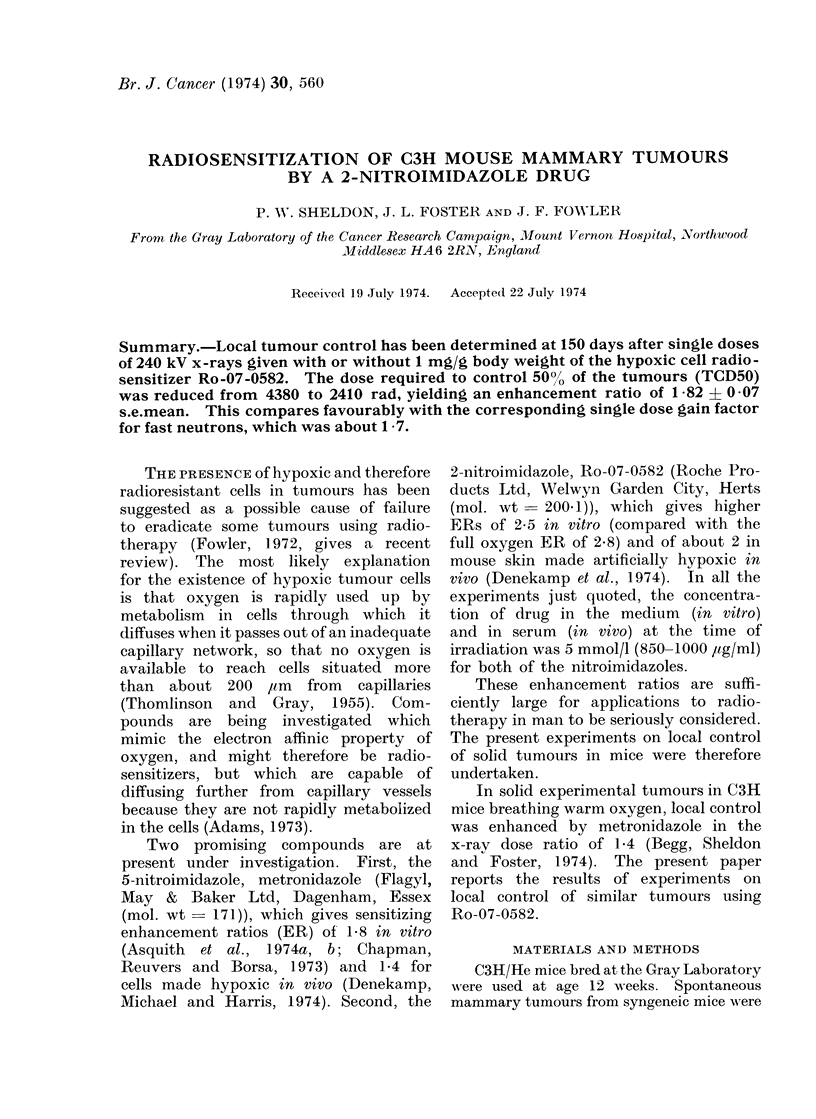
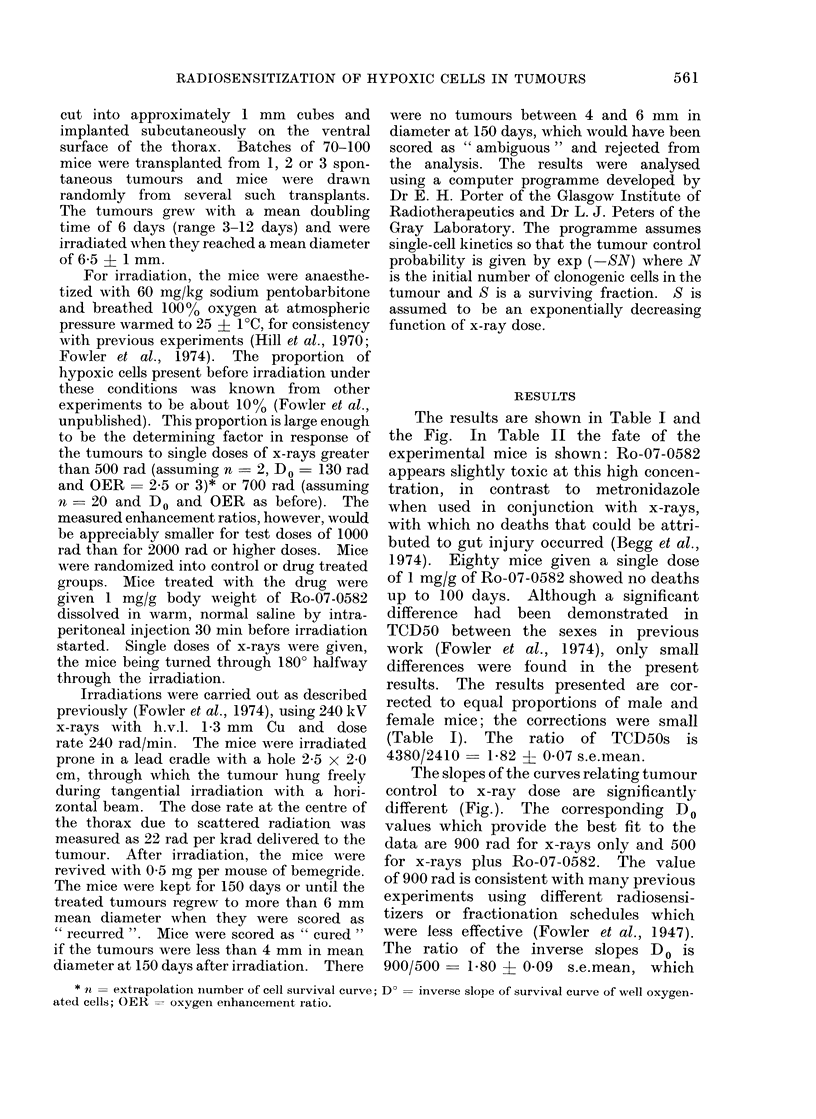
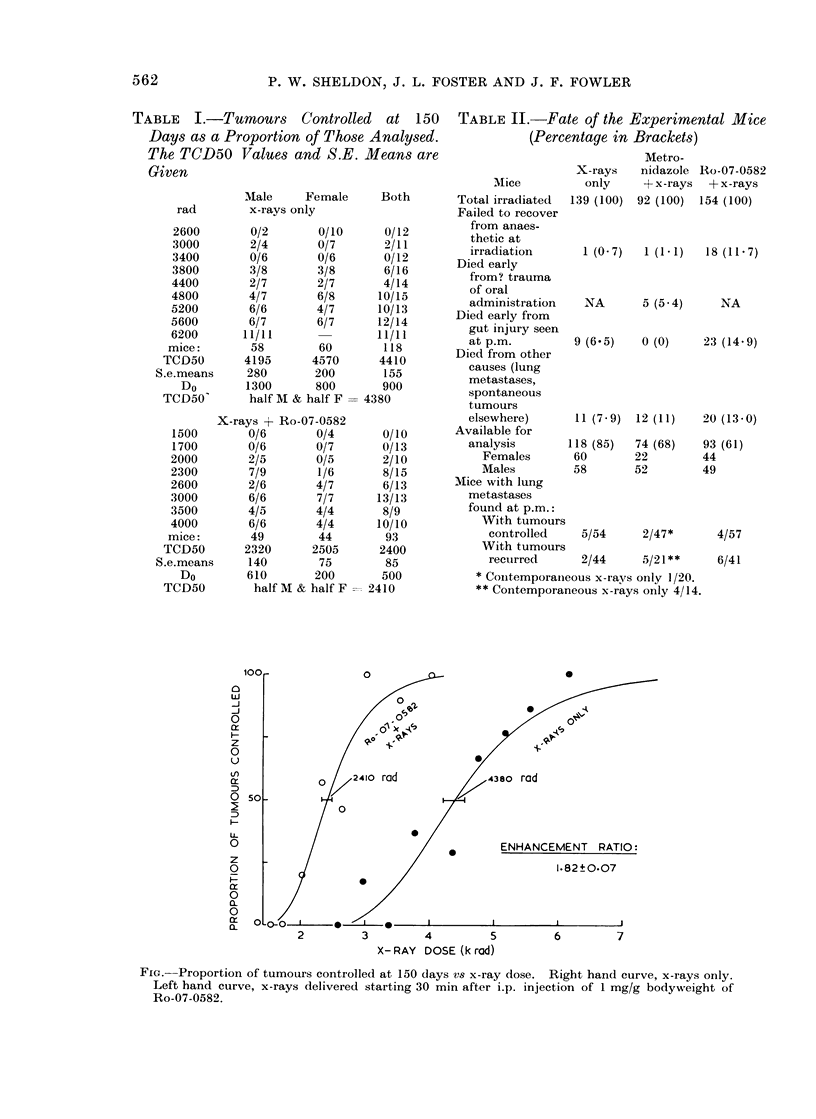
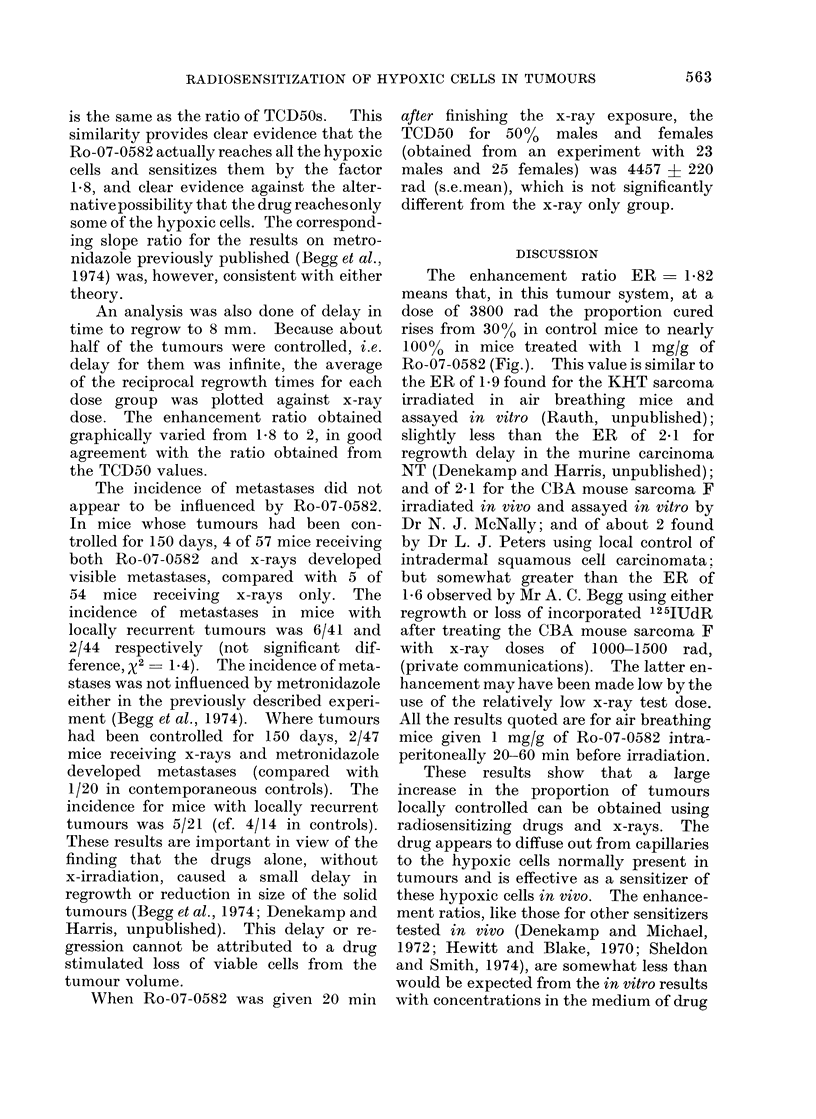
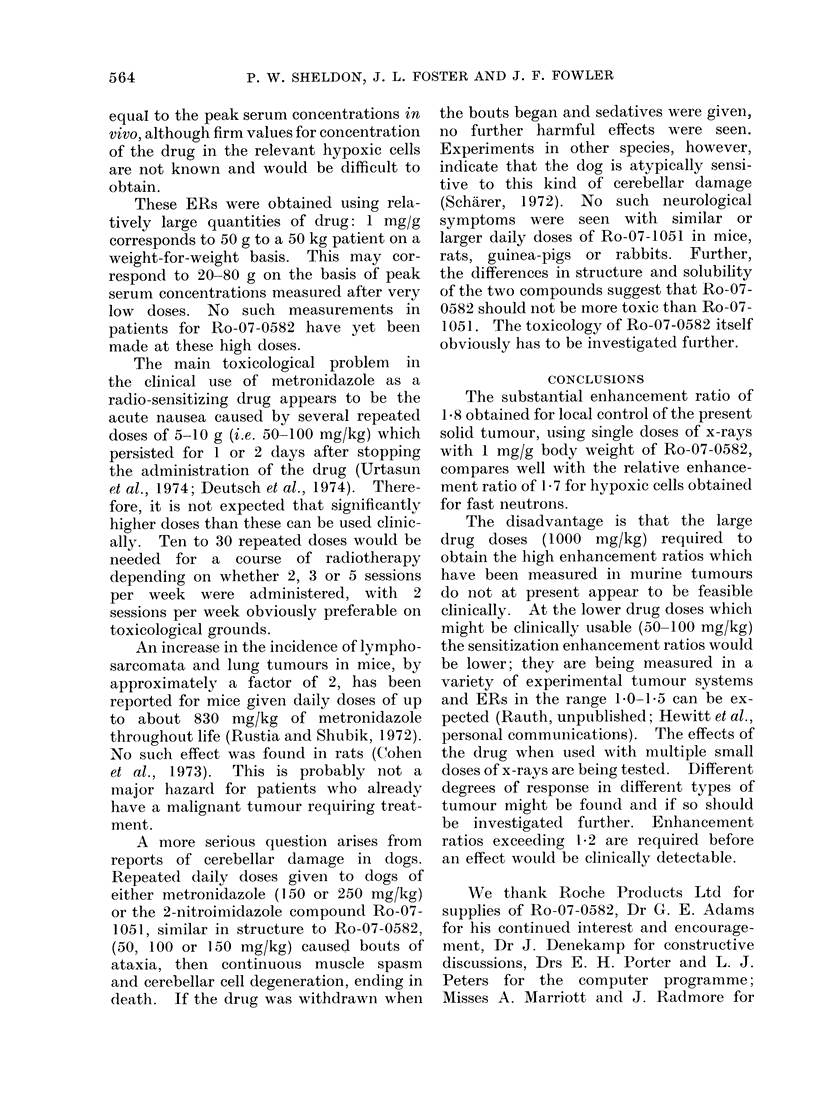
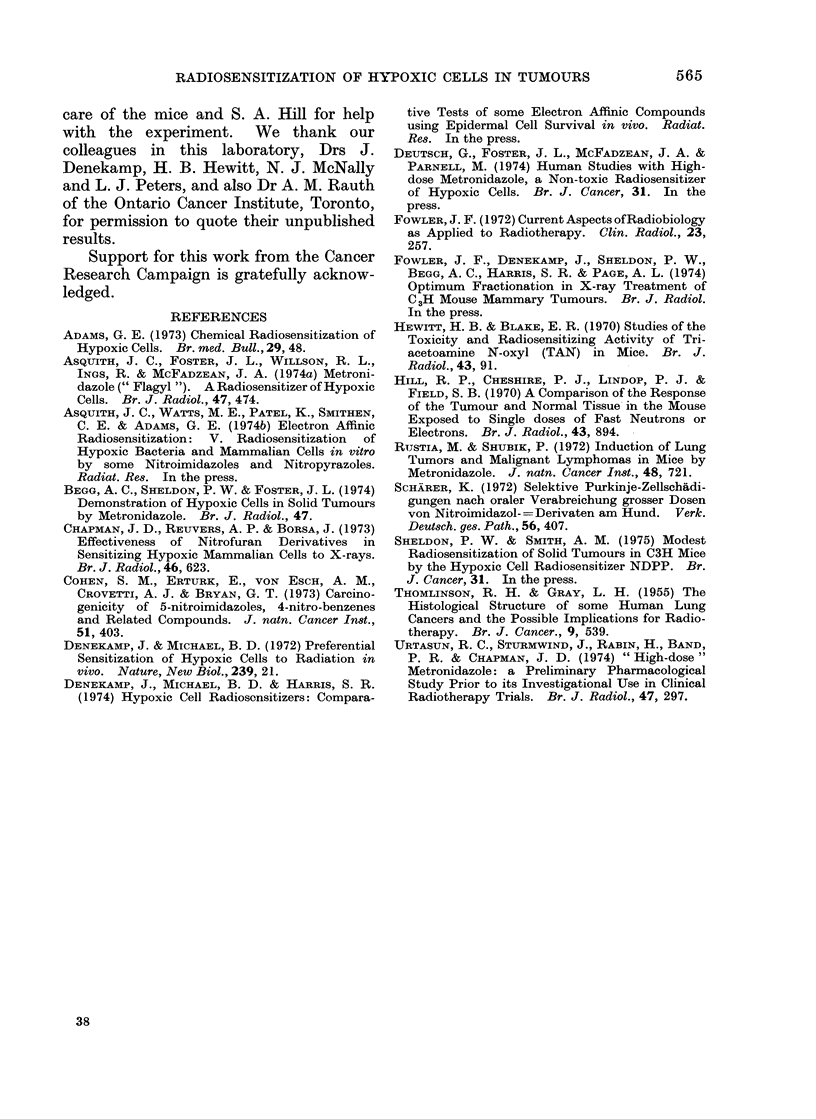
Selected References
These references are in PubMed. This may not be the complete list of references from this article.
- Adams G. E. Chemical radiosensitization of hypoxic cells. Br Med Bull. 1973 Jan;29(1):48–53. doi: 10.1093/oxfordjournals.bmb.a070956. [DOI] [PubMed] [Google Scholar]
- Asquith J. C., Foster J. L., Willson R. L., Ings R., McFadzean J. A. Metronidazole ("Flagyl"). A radiosensitizer of hypoxic cells. Br J Radiol. 1974 Aug;47(560):474–481. doi: 10.1259/0007-1285-47-560-474. [DOI] [PubMed] [Google Scholar]
- Chapman J. D., Reuvers A. P., Borsa J. Effectiveness of nitrofuran derivatives in sensitizing hypoxic mammalian cells to x rays. Br J Radiol. 1973 Aug;46(548):623–630. doi: 10.1259/0007-1285-46-548-623. [DOI] [PubMed] [Google Scholar]
- Cohen S. M., Ertürk E., Von Esch A. M., Crovetti A. J., Bryan G. T. Carcinogenicity of 5-nitrofurans, 5-nitroimidazoles, 4-nitrobenzenes, and related compounds. J Natl Cancer Inst. 1973 Aug;51(2):403–417. [PubMed] [Google Scholar]
- Denekamp J., Michael B. D. Preferential sensitization of hypoxic cells to radiation in vivo. Nat New Biol. 1972 Sep 6;239(88):21–23. doi: 10.1038/newbio239021a0. [DOI] [PubMed] [Google Scholar]
- Fowler J. F. Current aspects of radiobiology as applied to radiotherapy. Clin Radiol. 1972 Jul;23(3):257–262. doi: 10.1016/s0009-9260(72)80042-4. [DOI] [PubMed] [Google Scholar]
- Hewitt H. B., Blake E. R. Studies of the toxicity and radiosensitising activity of triacetoneamine-N-oxyl in mice. Br J Radiol. 1970 Feb;43(506):91–96. doi: 10.1259/0007-1285-43-506-91. [DOI] [PubMed] [Google Scholar]
- Hill R. P., Cheshire P. J., Lindop P. J., Field S. B. A comparison of the response of tumour and normal tissue in the mouse exposed to single doses of fast neutrons or electrons. Br J Radiol. 1970 Dec;43(516):894–897. doi: 10.1259/0007-1285-43-516-894. [DOI] [PubMed] [Google Scholar]
- Rustia M., Shubik P. Induction of lung tumors and malignant lymphomas in mice by metronidazole. J Natl Cancer Inst. 1972 Mar;48(3):721–729. [PubMed] [Google Scholar]
- Schärer K. Selektive Purkinje-Zellschädingungen nach oraler Verabreichung gosser Dosen von Nitroimidazol-Derivaten am Hund. Verh Dtsch Ges Pathol. 1972;56:407–410. [PubMed] [Google Scholar]
- THOMLINSON R. H., GRAY L. H. The histological structure of some human lung cancers and the possible implications for radiotherapy. Br J Cancer. 1955 Dec;9(4):539–549. doi: 10.1038/bjc.1955.55. [DOI] [PMC free article] [PubMed] [Google Scholar]
- Urtasun R. C., Sturmwind J., Rabin H., Band P. R., Chapman J. D. Letter: "High-dose" metronidazole: a preliminary pharmacological study prior to its investigational use in clinical radiotherapy trials. Br J Radiol. 1974 May;47(557):297–299. doi: 10.1259/0007-1285-47-557-297-c. [DOI] [PubMed] [Google Scholar]


